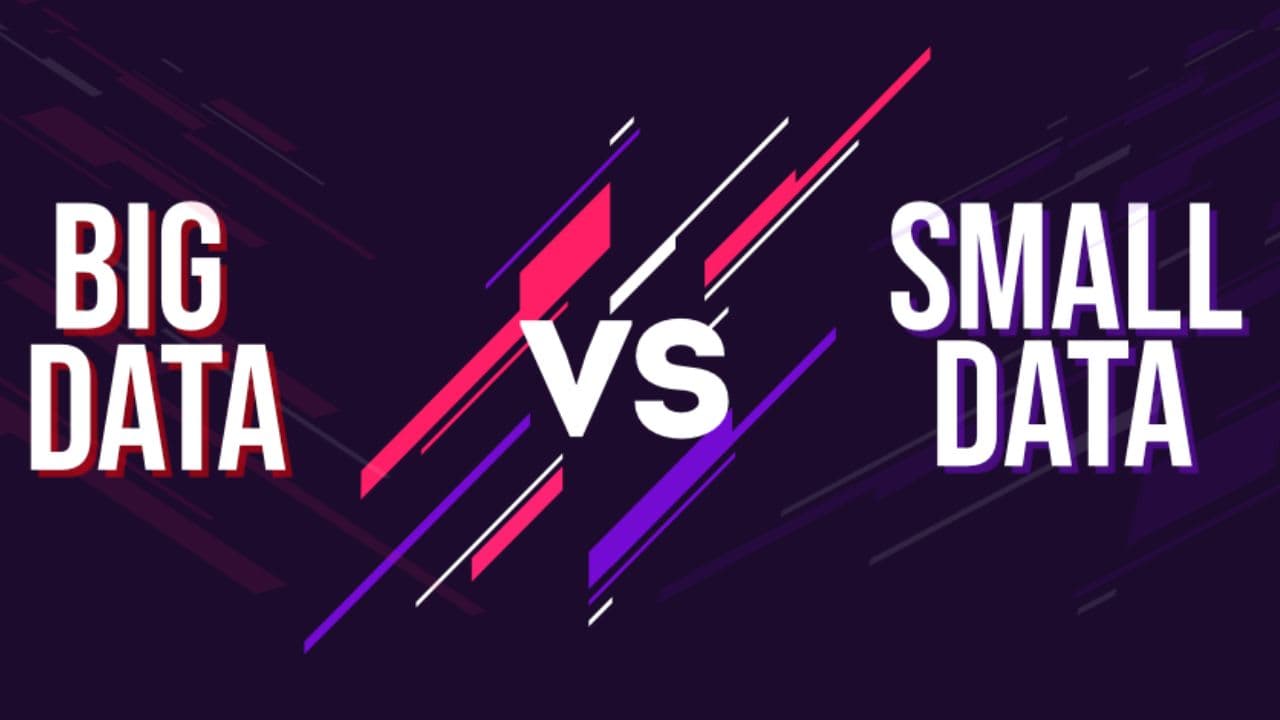11 Best Big Data Books in 2024 [Beginners and Advanced]
Types of Big Data
Every time you pick up your smartphone to scroll down Instagram or shop from your favorite online website, or simply watch a YouTube video, you are actually contributing to producing or consuming big data. In fact, an unimaginable amount of data is produced everyday: 328.77 million terabytes to be exact. With the continual growth of the digital world, this massive volume increases year after year. In 2023, it is estimated that 120 zettabytes of data will be generated globally. That figure will further rise to a staggering 180 zettabytes in 2025.
Some people tend to dismiss big data as a mere buzzword. And they’ll be surprised to find that it is in fact a powerful resource that can help many businesses and industries gain insights, make vital decisions, and solve their problems in order to flourish.
But big data, like any other resource out there, can come with its own unique challenges. Understanding different types of big data and their functions is the first and foremost step to successfully overcome any challenges they might pose. That’s why in this article we’re going to go over all main types of big data and their use cases.
The Three Main Types of Big Data
Let’s start by deciphering the primary way we categorize big data which is its structure. Structure refers to the organization, formatting, and storage of data.
Structured Data
Structured data follows a predefined and rigid format. It can be easily searched and manipulated by machines. This type is often stored in relational databases or spreadsheets. Each row represents a record and each column represents an attribute.
A classic analogy for this type of data is a well-organized library in which each book is meticulously categorized and labeled. Any task that demands precise and exact information calls for structured data. Dates, customer profiles, product specifics, and transaction records all fall under this category.
Unstructured Data
Quite contrary to structured data, unstructured data lacks a predefined structure and can take various forms including text, images, audio, and videos. It may seem chaotic, but once individuals learn how to extract meaningful patterns from it, they get access to a hidden treasure of valuable insights which further lead to a thorough understanding of consumer sentiment.
Unstructured data is like a crowded street market buzzing with voices from various corners. Videos, images, audio files, podcasts, PDFs, Word documents, emails, social media posts, and articles including this very article that you are reading right now are all examples of this type of data.
Semi-structured Data
Whatever lies between the structured and unstructured categories is called semi-structured data. It is not as organized as structured data but possesses some level of organization. This type is commonly found in formats like XML (eXtensible Markup Language) and JSON (JavaScript Object Notation).
Semi-structured data is like a collection of interconnected post-it notes. There’s a degree of order to it but it’s much more flexible than a formal document.
Additional Types of Big Data
Structure-based classification is not the only way of categorizing big data. Big data can also be classified based on its inherent nature or domain.
Time-series Data
Time-series data is collected or recorded over time at regular or sporadic intervals. Known as a reliable trend-tracker, this data is perfect for spotting patterns, anomalies, trends, and shifts over time. Stock prices, temperature measurements, and website traffic are various examples of time-series data.
Businesses and organizations use this type of data to predict future outcomes based on historical data and trends. They also use it to identify and detect suspicious behavior or activity from normal patterns.
Geospatial Data
Geospatial data is tied to a specific location on our planet’s surface, a compass for mapping, navigation, and spatial analysis. Satellite imagery, GPS data, and GIS data come together in this category.
Businesses usually employ geospatial data for location-based intelligence to understand the characteristics of their customers, optimize their transportation, and manage natural or man-made disasters like floods and fires.
Multimedia Data
Multimedia data spans a broad spectrum of content including images, videos, audio, and animations. It acts as the spice of life and enriches our experiences in different areas such as entertainment, education, or communication.
If it wasn’t for this type of data, organizations weren’t able to create engaging and attractive content, analyze their content, or even deliver them to their audiences.
Use Cases for Each Type
As we have seen above, different types of big data have different characteristics and applications. So it’s a must for organizations and businesses to be able to first identify and then utilize the right type of big data for their specific goals. This will help them improve their problem-solving, enhance their customer satisfaction, increase their operational efficiency, reduce unnecessary costs and risks, and innovate new products or services. Here are some examples of use cases for each type:
Structured Data
Banking and finance is one area that efficiently uses structured data. Thanks to this type of data, banks can analyze their customer details, transaction records, and credit scores. This empowers fraud detection, risk management, and regulatory compliance. For instance, banks can preemptively identify customers at risk of loan or credit card defaults and take corrective actions.
Another area that benefits from structured data is healthcare. Patient data, medical records, and test results are analyzed for diagnoses, treatment plans, and monitoring. Hospitals track patients’ vital signs using this type of data and alert staff to any anomalies.
Unstructured Data
Unstructured data is the beating heart of social media platforms. It drives these platforms to enable sentiment analysis, trend tracking, and recommendation systems. For example, platforms delve into users’ posts, comments, likes, and shares to grasp their emotions and opinions.
Besides social media, the education system is blessed with this type of data. Unstructured data acting as the guiding light in education can be applied to analyze learning materials, from articles to videos for personalized learning experiences. It helps educators offer customized feedback and suggestions based on students’ progress and performance.
Semi-structured Data
Web scraping is one of the many fields that can enormously benefit from the use of semi-structured data. It fuels market research, competitor analysis, and even price comparisons. A web scraper could compare product prices across various e-commerce sites, all thanks to semi-structured data.
Data integration is another area that turns this type of data to its advantage. Semi-structured data bridges data gaps by combining information from diverse sources using formats like CSV files or NoSQL databases. This aids in data warehousing, business intelligence, and analytics. For example, merging customer information from different systems provides a comprehensive view.
Other Data Types
Looking beyond the main three, other forms of big data also empower businesses. Time-series data allows organizations to spot trends and patterns over time, enabling forecasting with historical data. Logistics companies utilize geospatial data for tracking assets, route optimization, and inventory management based on location. Multimedia data opens up engaging content opportunities, with marketers leveraging images, video, and audio to understand and connect with customers.
Correct application of these data types unlocks tangible benefits. Time-series data improves predictive analytics for informed planning. Geospatial data boosts supply chain efficiency to cut costs. Multimedia data creates personalized, targeted marketing campaigns for greater customer acquisition.
The key is properly identifying where each data type can maximize impact. Their unique nature makes time-series ideal for observing trends, geospatial perfect for mapping, and multimedia well-suited for creative content.
Frequently Asked Questions (FAQs)
Some common questions and answers about different types of big data:
How do structured and unstructured data differ?
Since structured data follows a defined format and schema, it is easier to organize and process. Unstructured data, on the other hand, lacks a predetermined structure and can take various forms and shapes. In terms of their usage, structured data is well-suited for databases, while unstructured data requires more advanced analytics to extract meaningful insights.
Which type of big data is most common?
According to some estimates, unstructured data makes up about 80% of all data generated in the world, but this number can vary depending on the domain or source of the data.
How are these types stored and accessed?
Different types of big data ask for different storage and access methods. Structured data is usually stored in relational databases like SQL Server, Oracle, or MySQL. It uses SQL to access the data. Unstructured data is often stored in file systems, such as HDFS, Amazon S3, or Google Cloud Storage. To access or manipulate the data, this type uses APIs or specialized tools. Semi-structured data, the most adaptive one, can be stored in either relational databases or file systems. It actually depends on the format and complexity of the data. XML, JSON, and CSV are common formats for this type of data.
Why is understanding these types important for businesses?
If businesses are willing to effectively collect and analyze information, they must put the time and effort to fully understand different types of big data. Next, they can utilize these data types to improve their decision-making, personalized customer experiences, and innovative solutions.
Conclusion
Each type of big data comes with its own advantages and disadvantages, and each one can help us achieve different objectives. Every type has its unique way to contribute to this process. Structured data will help with its great precision, unstructured data does the same by its richness, and finally semi-structured data aids us with its considerable flexibility.
Now that you have a good grasp of all different types of big data, it’s time to apply what you have learned to your own data needs. Both employers and employees can benefit from this great asset in their profession or daily life. Challenge yourself by exploring your own data questions. What insights could you uncover? What problems could you solve?
![11 Best Big Data Books in 2024 [Beginners and Advanced]](/_next/image/?url=https%3A%2F%2Fres.cloudinary.com%2Fdvzkzccvn%2Fimages%2Ff_auto%2Cq_auto%2Fv1697123039%2F11-Best-Big-Data-Books-in-2023-Beginners-and-Advanced-1%2F11-Best-Big-Data-Books-in-2023-Beginners-and-Advanced-1.jpg%3F_i%3DAA&w=3840&q=75)

